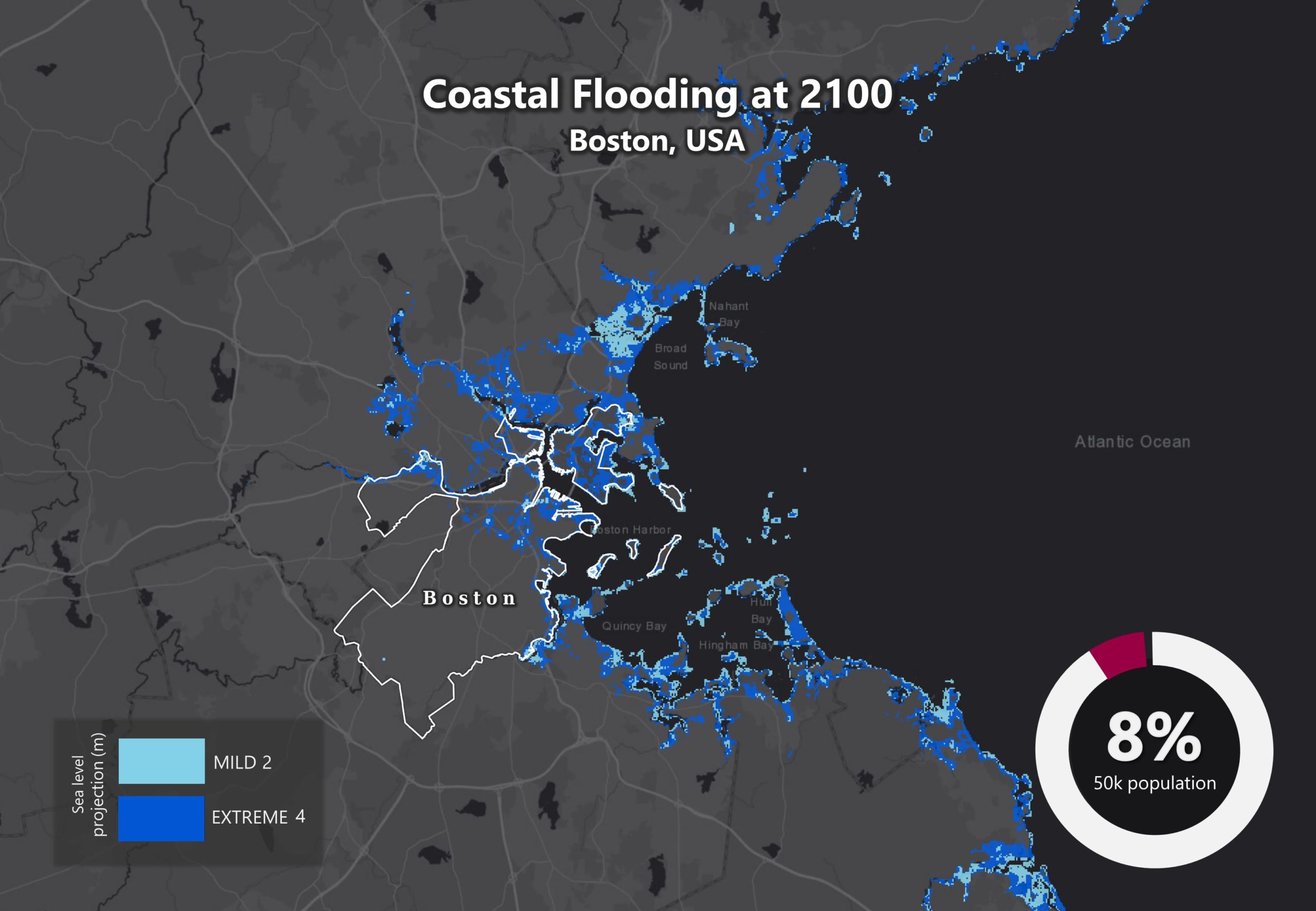Ocean Current Slowdown: Supercharging US Sea Level Rise

Table of Contents
The Role of Ocean Currents in Sea Level Rise
Ocean currents act as a global conveyor belt, distributing heat and affecting sea levels regionally. These currents, driven by differences in temperature and salinity, create a complex system of circulation that influences regional sea levels. Slowdowns disrupt this delicate balance, leading to uneven sea level rise around the globe.
- The Gulf Stream and its impact on the US East Coast: The Gulf Stream, a powerful warm current flowing northward along the US East Coast, plays a crucial role in moderating regional temperatures and influencing sea levels. A slowdown in the Gulf Stream can lead to a rise in sea levels along the eastern seaboard.
- The Atlantic Meridional Overturning Circulation (AMOC) and its global significance: The AMOC is a large-scale system of ocean currents that transports warm water from the tropics towards the North Atlantic. Its strength directly impacts global climate patterns and sea level distribution. A weakening AMOC contributes to rising sea levels in various regions, including the US East Coast.
- How changes in salinity and temperature affect current strength: Ocean currents are sensitive to changes in temperature and salinity. Melting glaciers and ice sheets introduce freshwater into the ocean, reducing salinity and potentially disrupting the thermohaline circulation that drives many currents. Similarly, rising ocean temperatures alter the density of water, influencing current speed and direction.
- The connection between ocean currents and regional sea level variations: Sea level rise isn't uniform across the globe. Ocean currents play a major role in determining regional variations. A slowdown in currents can lead to a disproportionately higher rise in certain coastal areas.
Evidence of Ocean Current Slowdown
Scientific data provides compelling evidence of a discernible slowdown in key ocean currents, particularly in the Atlantic. This slowdown isn't a mere speculation; it's a trend supported by multiple lines of evidence.
- Satellite observations and their role in monitoring current speed and direction: Advanced satellite technology allows scientists to monitor ocean currents with unprecedented accuracy, providing real-time data on speed and direction. These observations reveal a slowing trend in key currents.
- Analysis of historical data showing long-term trends: Analysis of historical oceanographic data, spanning decades, confirms the long-term trend of ocean current slowdown. This historical context is essential for understanding the magnitude and implications of the observed changes.
- Specific examples of observed slowdowns in key currents: Studies have documented significant slowdowns in the Gulf Stream and the AMOC, highlighting the global nature of this concerning phenomenon. These specific examples illustrate the real-world impact of current weakening.
- The use of oceanographic models to project future changes: Sophisticated oceanographic models, incorporating climate change projections, predict further slowdowns in ocean currents in the coming decades. These projections underscore the urgency of addressing the underlying causes.
The Impact on US Coastal Communities
A slower Gulf Stream and weakened AMOC directly contribute to higher sea levels along the US coastline, exacerbating existing challenges. The consequences are far-reaching and impact various aspects of coastal life.
- Increased frequency and severity of coastal flooding: Higher sea levels significantly increase the frequency and severity of coastal flooding, threatening homes, businesses, and infrastructure.
- Erosion and habitat loss in coastal ecosystems: Rising sea levels cause coastal erosion, leading to habitat loss for numerous species and threatening the biodiversity of coastal ecosystems.
- Threats to infrastructure and human settlements: Coastal infrastructure, including roads, bridges, and buildings, is vulnerable to damage from increased flooding and erosion, displacing communities and disrupting daily life.
- Economic impacts on coastal industries (tourism, fishing): The tourism and fishing industries, vital to many coastal economies, are severely impacted by rising sea levels, coastal erosion, and habitat loss.
Specific examples of impacted areas:
Florida, with its extensive coastline and low-lying areas, is particularly vulnerable. Sea level rise rates in Florida are among the highest in the US, directly linked to the slowdown of the Gulf Stream. Similarly, the Mid-Atlantic region experiences significant impacts, with increased coastal flooding and erosion threatening communities and infrastructure.
Climate Change and Ocean Current Slowdown
Climate change, primarily driven by greenhouse gas emissions, is the leading cause of the observed slowdown in ocean currents. The warming planet is disrupting the delicate balance of ocean temperatures and salinity, impacting current dynamics.
- Melting glaciers and ice sheets affecting salinity: The melting of glaciers and ice sheets introduces vast amounts of freshwater into the ocean, reducing salinity and disrupting the density gradients that drive ocean currents.
- Increased ocean temperatures disrupting thermohaline circulation: Rising ocean temperatures alter the density of seawater, affecting the thermohaline circulation, a crucial driver of global ocean currents.
- The positive feedback loop between warming oceans and current slowdown: The slowdown of ocean currents can further exacerbate warming, creating a positive feedback loop that accelerates climate change.
- The potential for abrupt and irreversible changes: Scientists warn of the potential for abrupt and irreversible changes in ocean currents, with potentially catastrophic consequences for global climate and sea levels.
Conclusion
The slowdown of major ocean currents, particularly the Gulf Stream and the AMOC, is significantly accelerating sea level rise along the US coastline. This trend is largely driven by climate change and poses severe risks to coastal communities and ecosystems. Understanding the impact of ocean current slowdown on US sea level rise is crucial for effective adaptation and mitigation strategies. Learn more about the science behind this alarming trend and get involved in supporting climate action to slow ocean current slowdown and protect our coastlines.

Featured Posts
-
 Russia Hands Down 13 Year Prison Term To Australian For Ukraine War Participation
May 18, 2025
Russia Hands Down 13 Year Prison Term To Australian For Ukraine War Participation
May 18, 2025 -
 Osama Bin Laden Documentary Netflix Release Date And Manhunt Details
May 18, 2025
Osama Bin Laden Documentary Netflix Release Date And Manhunt Details
May 18, 2025 -
 Kanye West And Taylor Swift The Super Bowl Performance Controversy
May 18, 2025
Kanye West And Taylor Swift The Super Bowl Performance Controversy
May 18, 2025 -
 Southwest Washington Businesses Prepare For Impact Of New Tariffs
May 18, 2025
Southwest Washington Businesses Prepare For Impact Of New Tariffs
May 18, 2025 -
 Tigers Riley Greenes Historic Two Home Run Ninth Inning
May 18, 2025
Tigers Riley Greenes Historic Two Home Run Ninth Inning
May 18, 2025
Latest Posts
-
 Political Statement Or Fashion Choice Decoding Mike Myers Snl Shirt
May 18, 2025
Political Statement Or Fashion Choice Decoding Mike Myers Snl Shirt
May 18, 2025 -
 Charity Comedy Night Mike Myers And Colin Mochrie In Toronto
May 18, 2025
Charity Comedy Night Mike Myers And Colin Mochrie In Toronto
May 18, 2025 -
 The Hardys And Moose Tna Sacrifice Fallout And Future Implications
May 18, 2025
The Hardys And Moose Tna Sacrifice Fallout And Future Implications
May 18, 2025 -
 O Ilon Mask Sto Snl I Ermineia Toy Maik Magiers
May 18, 2025
O Ilon Mask Sto Snl I Ermineia Toy Maik Magiers
May 18, 2025 -
 Tna Sacrifice Results The Hardys And Mooses Post Match Situation
May 18, 2025
Tna Sacrifice Results The Hardys And Mooses Post Match Situation
May 18, 2025
